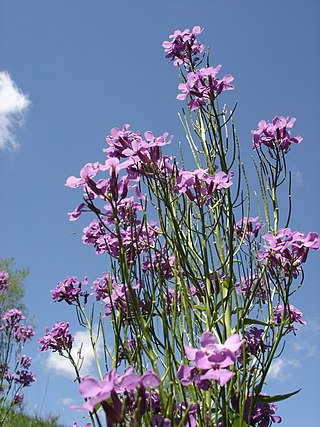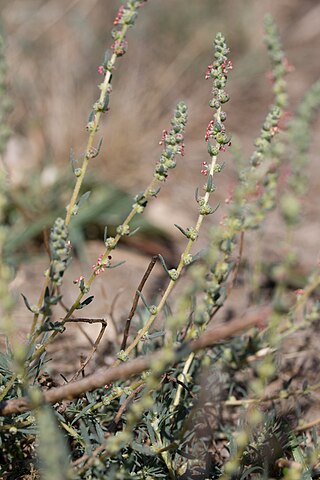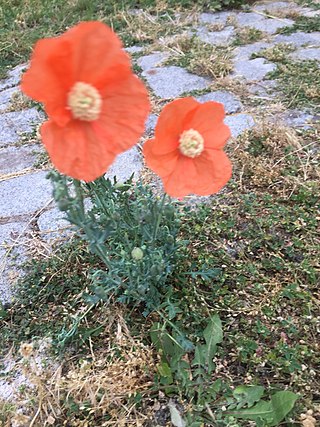
Linaria is a genus of almost 200 species of flowering plants, one of several related groups commonly called toadflax. They are annuals and herbaceous perennials, and the largest genus in the Antirrhineae tribe of the plantain family Plantaginaceae.

Hesperis is a genus of flowering plants in the family Brassicaceae. Most are native to Eurasia, with several endemic to Greece and Turkey. Many plants of this genus bear showy, fragrant flowers in shades of purple and white. One of the more widely known species is the common garden flower Hesperis matronalis. The genus name Hesperis was probably given because the scent of the flowers becomes more conspicuous towards evening.

Scorzonera is a genus of flowering plants in the tribe Cichorieae within the family Asteraceae.

Arenaria is a genus of flowering plants, within the family Caryophyllaceae.

Bassia is a genus of flowering plants in the family Amaranthaceae. They are distributed in the western Mediterranean to eastern Asia. Some occur outside their native ranges as introduced species.

Facchinia is a genus of flowering plants in the pink and carnation family Caryophyllaceae, native to the Pyrenees and the Alps. Many species in this genus were previously placed in Minuartia.

Camphorosma is a genus of flowering plants in the family Amaranthaceae, found in northern Africa, southern and eastern Europe, Crimea, Russia, Anatolia, the Caucasus, Iran, Afghanistan, Pakistan, Central Asia, the Altai, western Siberia, Xinjiang in China, and Mongolia. Annuals or subshrubs, they can be distinguished from closely related taxa such as Bassia by their flattened perianths which have four lobes, inflorescences with multicellular glandular hairs, a distinct C4 leaf anatomy type (called the Camphorosma type), and a chromosome count of 2n = 12.

Psephellus is a genus of flowering plants in the family Asteraceae, native to eastern Europe and western Asia. A taxonomic revision reassigned many species from Centaurea to Psephellus.

Dianthus crinitus is a species of Dianthus in the carnation family found in northwestern Africa, the eastern Aegean Islands, Anatolia, the Transcaucasus and the North Caucasus, Lebanon, Syria, Iran, the Gulf States, and Oman. Common names may be associated more with some subspecies than others, and include hairy carnation and long‑haired pink. It grows on serpentine soils.

Eremogone is a genus of flowering plants in the family Caryophyllaceae, native to western North America, northern Asia, eastern Europe and northeastern Africa. Attempts to resolve taxonomic relationships within the Caryophyllaceae have resulted in the enlargement of Eremogone with species from other genera.
Turanecio is a genus of flowering plants belonging to the family Asteraceae.
Bolanthus is a genus of flowering plants belonging to the family Caryophyllaceae.
Pseudocherleria is a genus of flowering plants belonging to the family Caryophyllaceae.
Mcneillia is a genus of flowering plants belonging to the family Caryophyllaceae.

Mononeuria is a genus of flowering plants belonging to the family Caryophyllaceae.

Papaver armeniacum, the Armenian poppy, is a species of flowering plant in the family Papaveraceae, native to the Caucasus region. It produces the benzylisoquinoline alkaloid armepavine.

Roemeria is a genus of flowering plants in the family Papaveraceae, native to Macaronesia, Europe, the Mediterranean, North Africa, the Caucasus, the Middle East, the Arabian Peninsula, Central Asia, the western Himalayas, Pakistan, Xinjiang, and Mongolia. A 2006 molecular analysis revised the taxonomy of Papaver, elevating Roemeria to the genus level, and including the species formerly in Papaver sect. Argemonidium.












